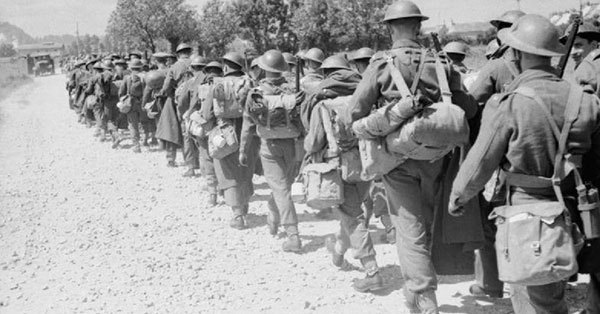There’s no escaping the fact that retreats are a natural and necessary part of warfare. When one army gains ground the other, by default, must lose it. However while lost ground often signifies a lost battle, retreat doesn’t always have to spell defeat.
Some of the retreats featured in this list were borne out of necessity; others were borne out of expediency. But they all have something in common: that whether in terms of survival or scale, the feats achieved by those who retreated were remarkable. Our first story takes us back to the apogee of Classical Greece, and into the heartlands of Asia Minor.
1 – Xenophon and the March of the 10,000
The Anabasis (literally meaning “the journey up from” in Greek) is the original retreat story of western literature. Written by soldier, philosopher, historian and equine expert Xenophon of Athens in the 4th century B.C, it tells the story of how an army of 10,000 Greek mercenaries, under the command of the Persian Prince Cyrus the Younger, marches into Persia to remove the legitimate king (and Cyrus’ brother) Artaxerxes II from the throne. Cryus and his mercenaries engage Artaxerxes in 401 B.C., at Cunaxa in Babylon. And with the tide of battle going their way, everything seems to be going swimmingly until Cryus rushes headlong at his brother’s bodyguard and is killed—impaled by a thrown javelin, making the whole expedition really rather pointless.

The fact that the Greeks have won a tactical victory puts Artaxerxes in a difficult position. Unable to destroy the remaining forces outright, he instead arranges for the Greek generals (first and foremost Clearchus of Sparta) to attend a peace conference. But it turns out to be a trap and they—and by extension, their army—end up losing their heads. This leaves the 10,000 Greek mercenaries in a sticky situation: deep in the heart of hostile Mesopotamia, miles from the sea and without leadership. Their first course of action is to elect new leaders, and one of those they picked is Xenophon.
They trek across barren deserts, struggle across snow-capped mountain ranges and barter with locals over essential supplies. They survive a snowstorm in Armenia, fight battles on hilltops and in mountain passes and navigate tricky local diplomacy, helping strong local allies in return for letting them pass. And the whole time Artaxerxes’ threatening forces are snapping at their heels. Eventually, they reach the coast of the Black Sea at Trabzon (modern-day Trebizond), and in their euphoric relief they cry out the famous words “thálatta, thálatta!” (The sea, the sea!). But this isn’t the end of their campaigning; rather than disbanding and returning home, they continue to campaign firstly under command of the Thracians and then the Spartans.
Curiously, despite Xenophon’s historically attested participation in the events described, the Anabasis is written in the third person. You might think this was done to distance the author from his story—maybe as an act of modesty—but this is at odds with the way Xenophon describes himself. The exemplary leader, Xenophon describes himself as splitting logs in the snow, dismounting from his horse to lead his men on foot and giving extremely long-winded speeches about discipline and authority. At times the Anabasis reads more like a prototypal handbook on military leadership than a story about 10,000 men trying to make their way back home. But this does nothing to mar the fact that it’s still one of the most gripping and readable military accounts that’s survived from antiquity.

